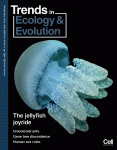Dr. Robert C. Reynolds Jr., head of the Dept. of Earth Sciences, Dartmouth College, found it hard to believe the results of their findings, so he evaluated the study. He replicated some of their tests as well as their statistics. To his surprise, he obtained the same results.
Dr. Reynolds is now deceased, but President of BLT Research Team Nancy Talbott said that "in discussing his results, Dr. Reynolds stated that 'the changes in the clay minerals in the soil of the crop circles would have required geological pressure (equal to that of mountains pressing down on sediments) or heat in the range of 600-800 degrees Celcius for many hours. Either one of which would have decimated the fields, which clearly did not happen.”
Dr. Reynolds concluded, “We must be dealing with an energy unknown to science.” (http://www.bltresearch.com/xrd.php)
Karen Alexander, a crop circle-expert, noted, “We have seen butterfly and bird patterns in the past, but this is the first jellyfish crop circle in the world. It is absolutely huge, three times the size of most patterns.”
And it seems to mirror the expansionist activities of jellyfish around the world.
According to Science Daily, “New research led by CSIRO Climate Adaptation Flagship and University of Queensland scientist, Dr. Anthony Richardson, and colleagues at the University of Miami, Swansea University, and the University of the Western Cape, present convincing evidence that the global ’jellyfish joyride’ is associated with over-fishing and excess nutrients from fertilizers and sewage.”
Dr. Richardson and his colleagues’ new research, entitled The jellyfish joyride: causes, consequences and management responses to a more gelatinous future, is the cover story in the current issue of the international journal; Trends in Ecology and Evolution, the highest-cited journal in Ecology and Evolutionary Biology. The paper states that human-induced stresses of overfishing, eutrophication, climate change, translocation and habitat modification appear to be promoting jellyfish blooms to the detriment of other marine organisms.
In summary, Dr. Richardson recommends, “managing the marine environment in a holistic way.”
Perhaps that is the wordless message from the crop circles, too.
The author wishes to thank Alex Champion for sharing his information on the jellyfish blooms and the crop circles.
(Note: You can view every article as one long page if you sign up as an Advocate Member, or higher).








